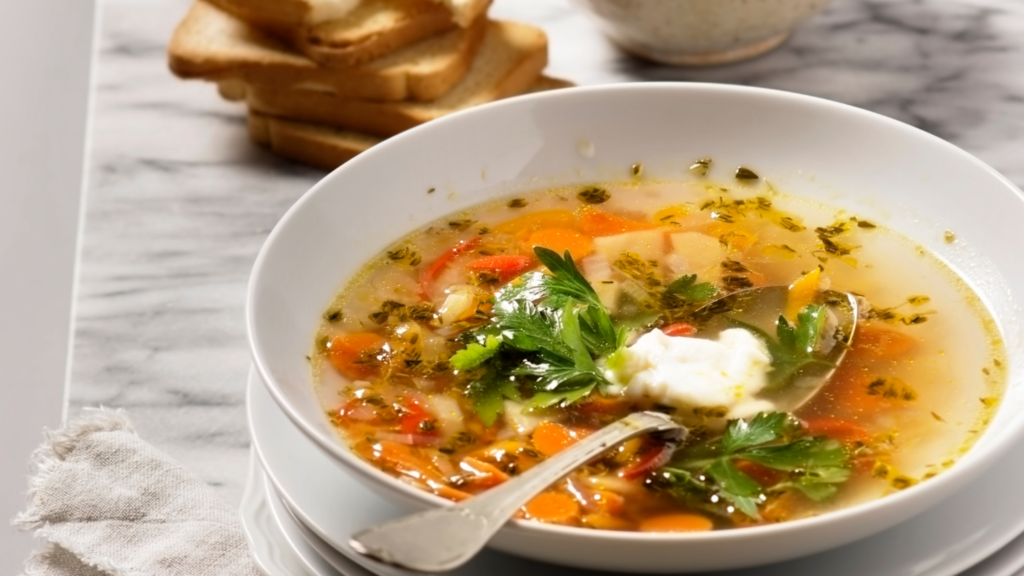With winter well underway, it’s that time of year when comfort meals and hearty dishes are just what the doctor ordered. Soups, stews, and slow-cooked meals all come to mind here. But when you’re looking at your meal plan it can be quite tricky to determine how you can combine and convert your plan options into a flavoursome winter warmer meal that will do the trick while still aligning with your portions, calories, and goals. So, let’s dive into it and show you how!
The Base
The base is what holds all the flavour. Let’s start out by checking the JCN approved condiments which you can find here, the options in green we can use freely! The base is going to depend on what kinds of flavours you want to create, but the options are limitless! I suggest always starting with a stock- veggie, chicken, beef, you name it! Then we add our flavours, also from the green list. Tinned tomato, garlic, ginger, chili, curry paste/powder, soy sauce, etc. all work great here.
The Filling
A lot of winter dishes likes soups tend to be carb-heavy (pumpkin, corn, potato, etc.). These kinds of meals also aren’t very fulling, so we tend to add the likes of toast, a roll, or noodles to help get that sustenance. This is usually where the problem is when trying to make a soup that fits your goals. So, this is where protein comes in. Protein should make up the bulk of your soup as it takes longer to digest and will help in keeping you fuller for longer. If you are making a vegetable-based soup like pumpkin or tomato where the protein may be lacking, adding shredded or smoked chicken is an easy and tasty way to incorporate that protein component. Next, add some dietary fats, as these are great for adding flavour and consistency to a soup. Examples of these are sesame oil, coconut milk and peanut butter. Lastly, add a variety of veggies using the grocery reference sheet that you can find here. Being a source of fibre, veggies will not only bulk up a meal but will also aid in keeping you fuller for longer. For example, spinach and leek in a chicken
noodle soup.
Tips:
- Frying your ingredients before adding them to the liquid to boil will create a deeper flavour! E.g., fry off your onion, garlic, ginger, and meat before adding them. If you’re using meat with the bone in, you can keep this intact, fry off the meat, and once it’s been cooked in the liquid, the
bone will be very easy to remove, leaving all its nutrients behind! - Don’t crowd the pan! When you’re doing your initial fry off, do it in batches so you can make sure everything is browned rather than steamed/boiled as they do when crowded. E.g., fry onion and garlic first, set aside in another bowl, then fry off meat. Once that’s done, you can add
everything back to the pot and add everything else - Soups and stews freeze really well! It’s so much easier to make a soup in bulk, but very unlikely you’ll want to eat it for every meal over the following week. So, get out those containers and make some space in the freezer. This way you can grab out a soup on a cold night with none of
the cooking time. - Try mixing your carbohydrates by halving your options. For example, using potato and kumara, or alternatively pumpkin and toast.

